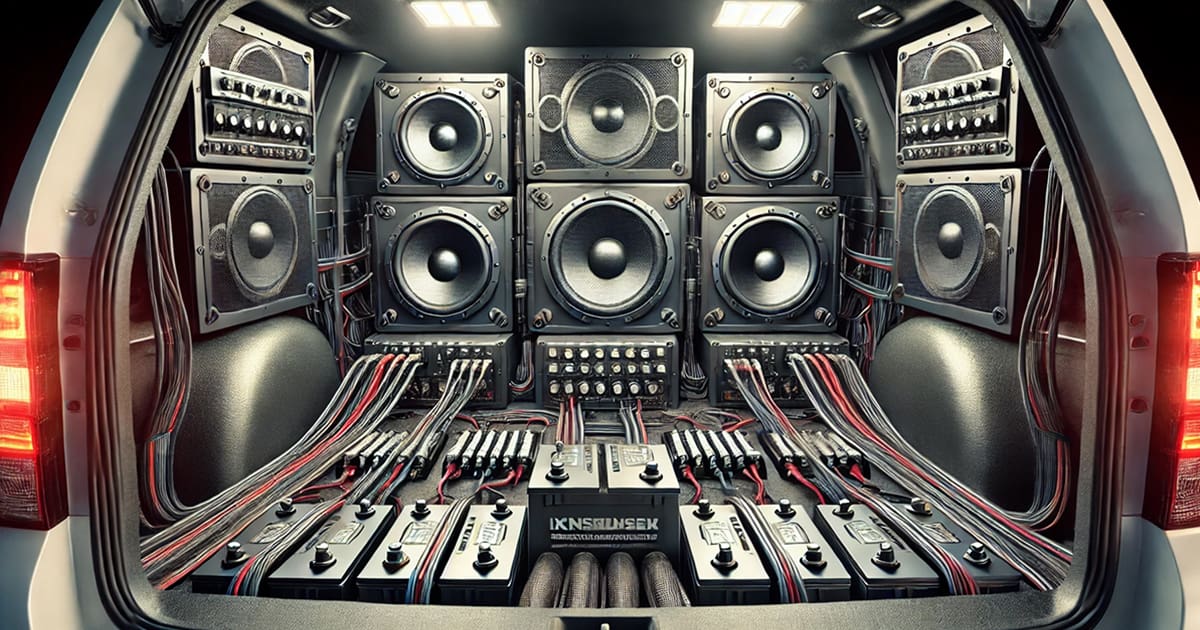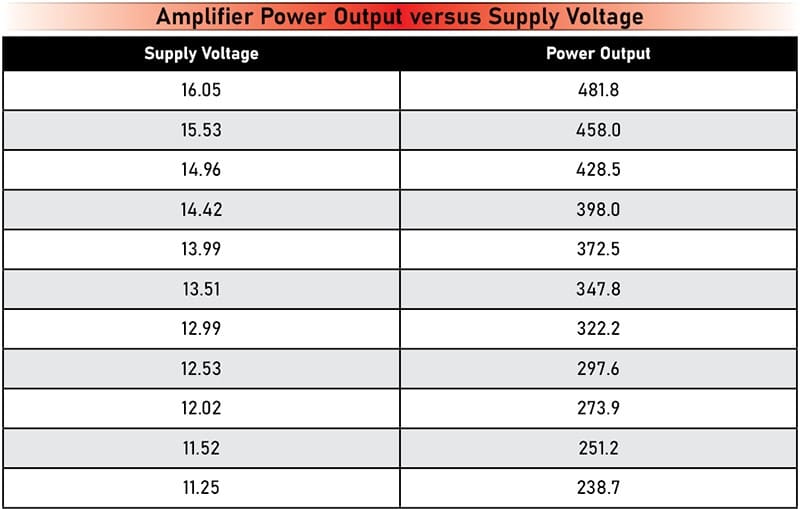A short while ago, while testing an amplifier’s maximum power output, we observed how significantly the power increased with higher supply voltage. This observation made us realize that we’ve never thoroughly examined the relationship between a vehicle’s battery voltage and a car audio amplifier’s maximum power output. It’s time to address that.
Why Does Battery Voltage Matter to Amplifier Power Production?
Today, most car audio amplifiers use loosely or completely unregulated power supplies. As a result, the positive and negative voltages available to feed the output devices become a fixed multiple of the supply voltage. For instance, if the battery rests at 12.5 volts, an amp might generate 500 watts. However, if that voltage increases to 14.4 volts, the amp might produce 600 watts.
Maximum Supply Voltage Limits
To ensure product reliability, companies typically set a maximum voltage limit, which prevents the amp from producing excessive power. But why is this important? All car audio amplifiers convert some of the power they consume into heat. The heatsink and cooling system must dissipate a specific amount of heat energy to control the amp’s temperature. Notably, as the power level increases, the heat that needs to be expelled also rises because amplifier efficiency remains constant at maximum power.
For example, consider an amplifier that is 80% efficient and produces 500 watts of power; it converts 125 watts into heat. If provided with more supply voltage, the amp might produce 600 watts, requiring the heatsink to manage 150 watts of heat. This is likely manageable. Now, if the amp could produce 700 watts at 16 volts, it would have to manage 175 watts of heat—a significant increase from 125 watts. Unless the chassis is massive or there are numerous 0.3 watts, stepping from 14 to 15 volts increased the output by 56 watts.
Why does the power level increase more with each voltage jump? Power is proportional to the square of the voltage divided by the load resistance, according to the formula V^2 ÷ R. Thus, a slight increase in voltage results in a moderate power increase.
How Can You Maximize Voltage to Your Car Audio Amplifier?
Without resorting to unreliable aftermarket alternators or maintaining battery banks, the simplest way to ensure your amplifier receives all the power your battery and charging system produce is to have the technician working on the vehicle install a high-quality, all-copper power cable large enough for the amplifier’s current requirements.
In a car audio installation requiring about 15 feet of power wire, we suggest the following cable sizes: 10-AWG for loads up to 22 amps, 8-AWG for loads up to 35 amps, and 6-AWG (if you can still find it) for loads up to 56 amps. For loads up to 88 amps, a 4-AWG cable suffices. If you must pass 218 amps of current over 15 feet, a cooling fans, this difference means the amp won’t run as long before overheating.
Moreover, increased supply voltage presents another issue: the maximum voltage ratings on components. For example, most amplifiers include filtering capacitors on the power connections, which might be 16-volt, 1000 μF units. To accept more than 16 volts, the manufacturer might need to upgrade to 25-volt capacitors. These higher-voltage capacitors are larger and more expensive. Additionally, diodes and other protection circuitry components might need upgrades to handle higher operating voltages, further increasing costs with little performance gain under normal conditions.
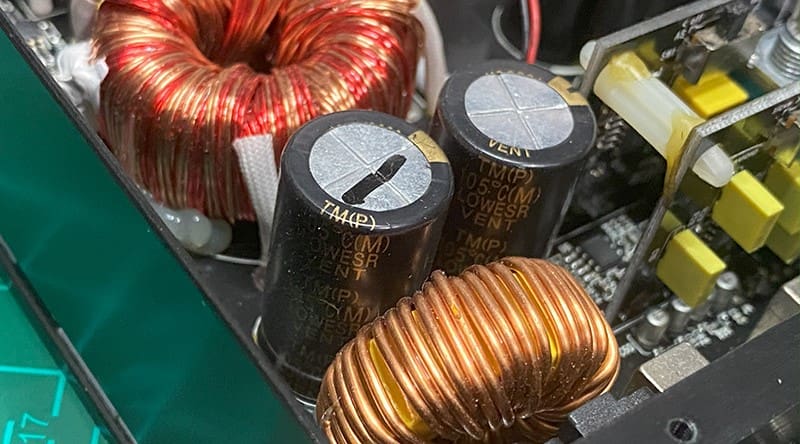
Testing Amplifier Maximum Power Output
We decided to test this further using a Rockford Fosgate Punch-Series P300X2 two-channel, full-range amplifier. Recently, we re-tested several amps with our new power supplies, and although this amp wasn’t on the schedule, we decided to test it anyway.
We set up the amp and connected it to a bank of 300-watt, low-inductance ceramic power resistors configured for a four-ohm load. Initially, we set the power supply to provide 16 volts to the amp, just under its maximum upper voltage limit. We then increased the signal to the amp until the output signal was within 1 to 1.05% THD+N. Afterward, we decreased the supply voltage and signal, measuring power output at 0.5-volt intervals until reaching the minimum power output of the power supplies. To comply with the ANSI/CTA-2006-D car audio amplifier power measurement standard, we measured power at 14.4 volts instead of 14.5 volts.
The difference in power output between 11.25 and 16 volts is substantial, as the chart shows. With an increase of 4.8 volts, the amp nearly doubled its power output. We simultaneously captured current draw measurements to calculate efficiency. This class-AB amplifier remained between 67% and 68% efficient throughout the entire range of measurements.
In our full Test Drive Review of the amplifier, our original maximum power rating was 360.1 watts at 14.15 volts. This time, we measured 398 watts at 14.4 volts. While you likely won’t hear the 38-watt difference, it’s worth noting that an amp rated to produce 300 watts made 400 watts. Rockford Fosgate fans already know they’re getting more than they paid for.
Plotting Amplifier Power vs. Battery Voltage
Let’s examine that chart as a graph.
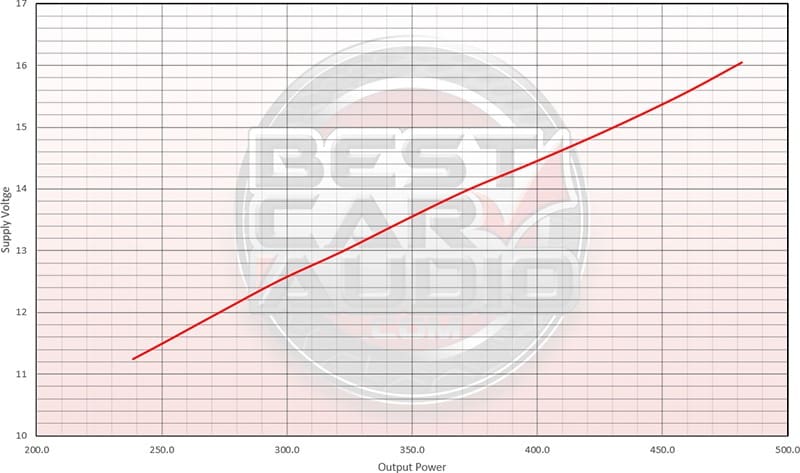
Interestingly, while the relationship between the maximum power an amp can produce and the supply voltage appears linear, it’s not. The increase from roughly 12 to 13 volts yielded 48.3 more watts. The jump from 13 to 14 volts added 50-AWG power cable is necessary. For up to 289 amps, use a 2/0-AWG cable. Finally, if you have a massive amplifier or multiple smaller amps, 4/0-AWG cable over 15 feet is suitable for 422 amps. While these cables can undoubtedly pass more current, the voltage drop for these calculations is set not to exceed 0.35 volts over the entire length. Don’t forget to account for losses in the return path, which, if the cabling size and length are the same, would result in a 0.7-volt drop.
The Math on Power Output Versus Power Wire Size
To illustrate more clearly, for our 300-watt amplifier, losing 0.7 volts at the power terminals reduces the output by around 35 watts, roughly 10% of the rated power. If you think skimping on a power cable is a good idea, here’s the math to prove otherwise.
Consider this amp’s maximum theoretical power output with 15 feet of 10, 8, and 4-AWG cables for power and ground connections. Assuming the electrical system could maintain 14.4 volts at the battery, a 15-foot run of 10-AWG power and ground cable would reduce the voltage at the amp to 13.11 volts. With 8-AWG cables, the voltage would drop to 13.59 volts, while using 4-AWG cables reduces the drop to 14.08 volts. If you splurged on 0-AWG cable, the drop across the cable would result in the amp receiving 14.27 volts. You might have expected less drop across 30 feet of 0-AWG power wire, but that’s not the case.
If you’re curious why Rockford Fosgate overrates its amplifiers, it’s because most installations lack adequately large power and ground cables. If you waste a volt across the power wire, in the case of the Punch P300X2, the maximum power output drops by about 10%. You’ll still get all the power you paid for, but not as much as possible. Therefore, investing in larger power and ground cables is more cost-effective than buying the next-size car audio amplifier in a series.
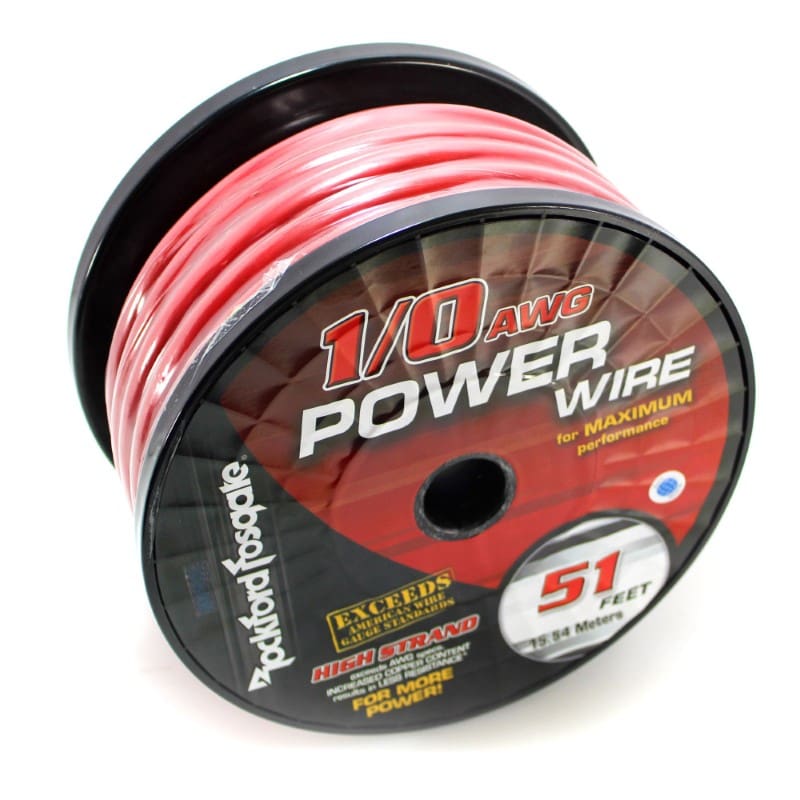
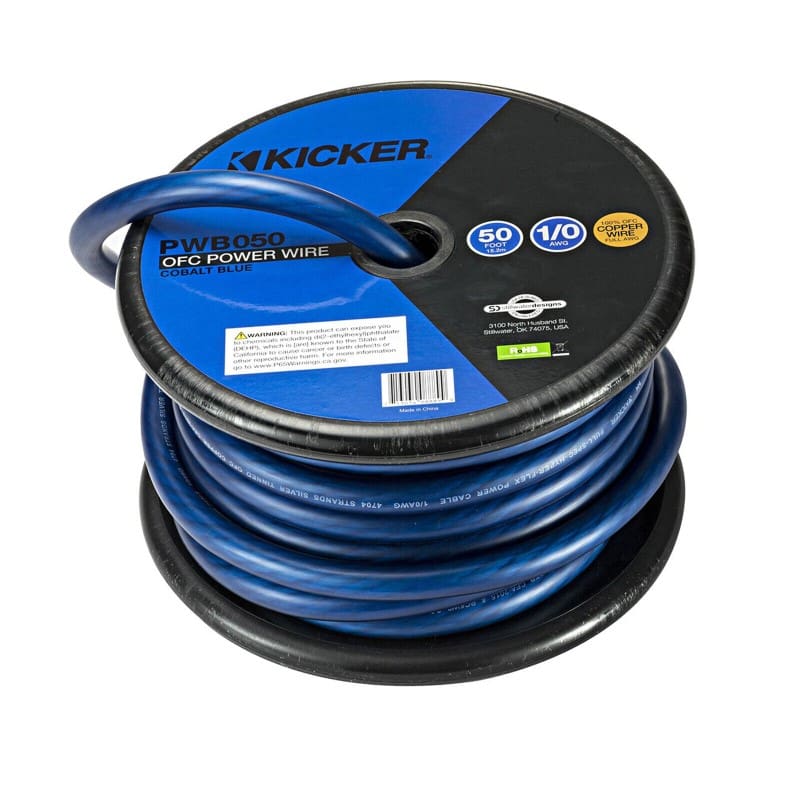

Don’t Starve Your Car Audio Amp for Voltage
Even after an average of three and a half decades in the mobile enhancement industry, none of our team members recall anyone publishing similar data regarding battery voltage and amp power. It may have happened, but we haven’t seen it. This data highlights the critical need for adequately sized power cables. If you’re considering upgrading your car audio system with high-power amplifiers, ensure the wiring is sufficient to maximize the power output from your chosen amp. Visit a local specialty mobile enhancement retailer today. Choose an amplifier that sounds great and is efficient, then ensure it is installed with the largest power and ground cables you can afford.
